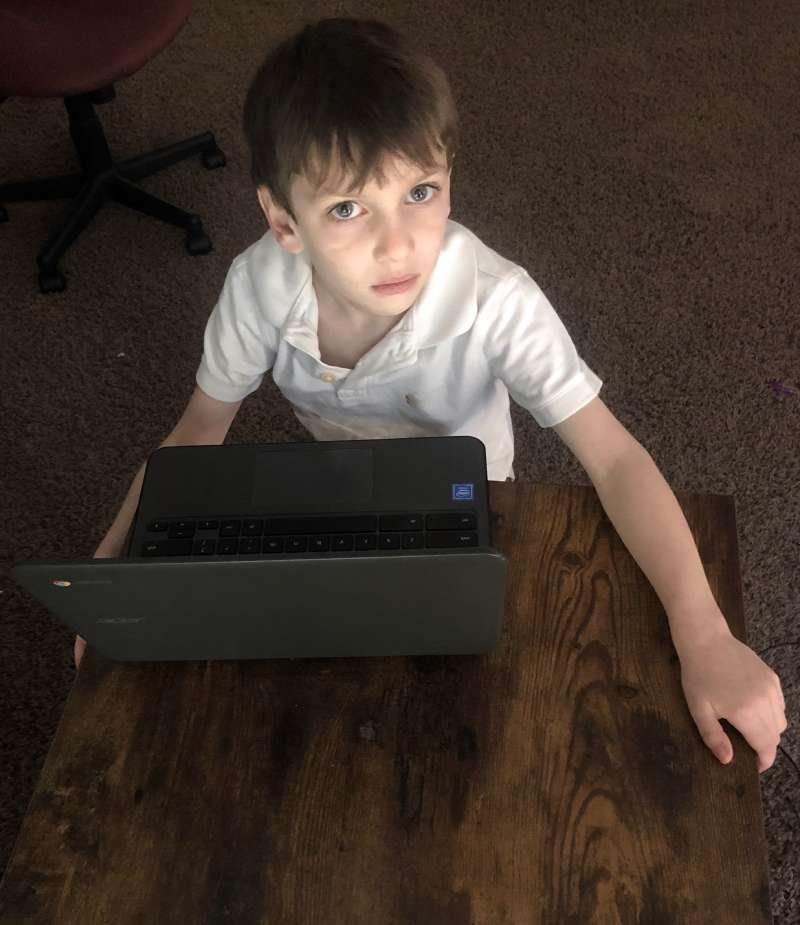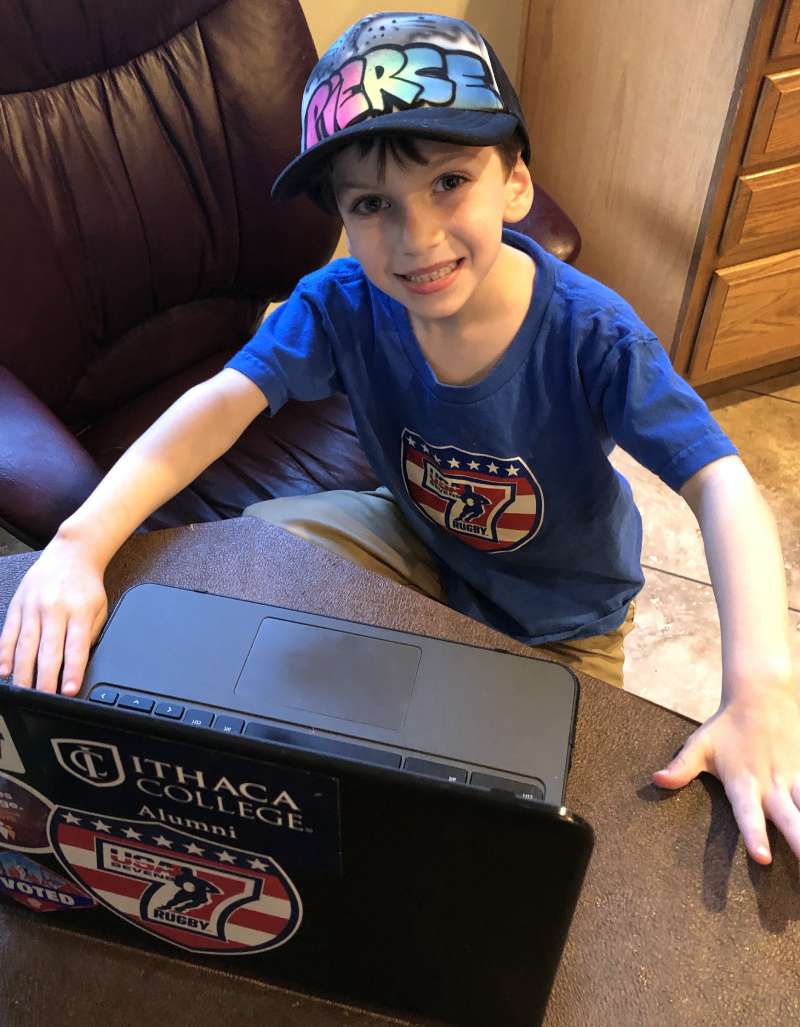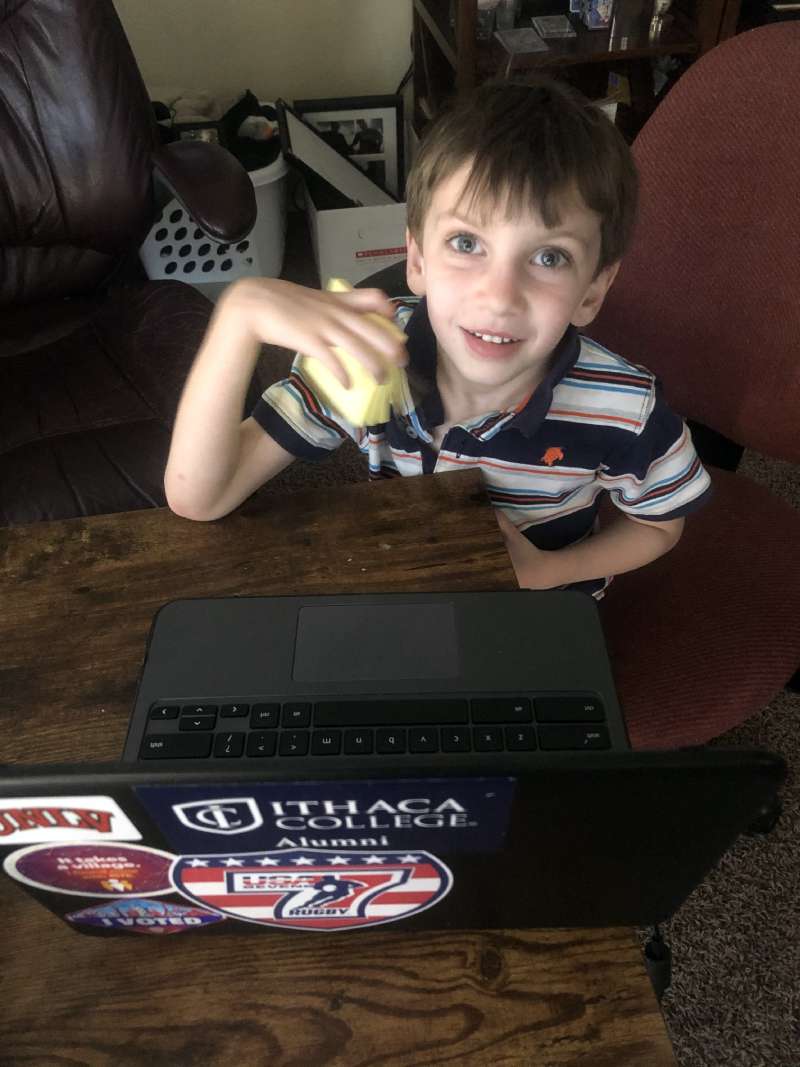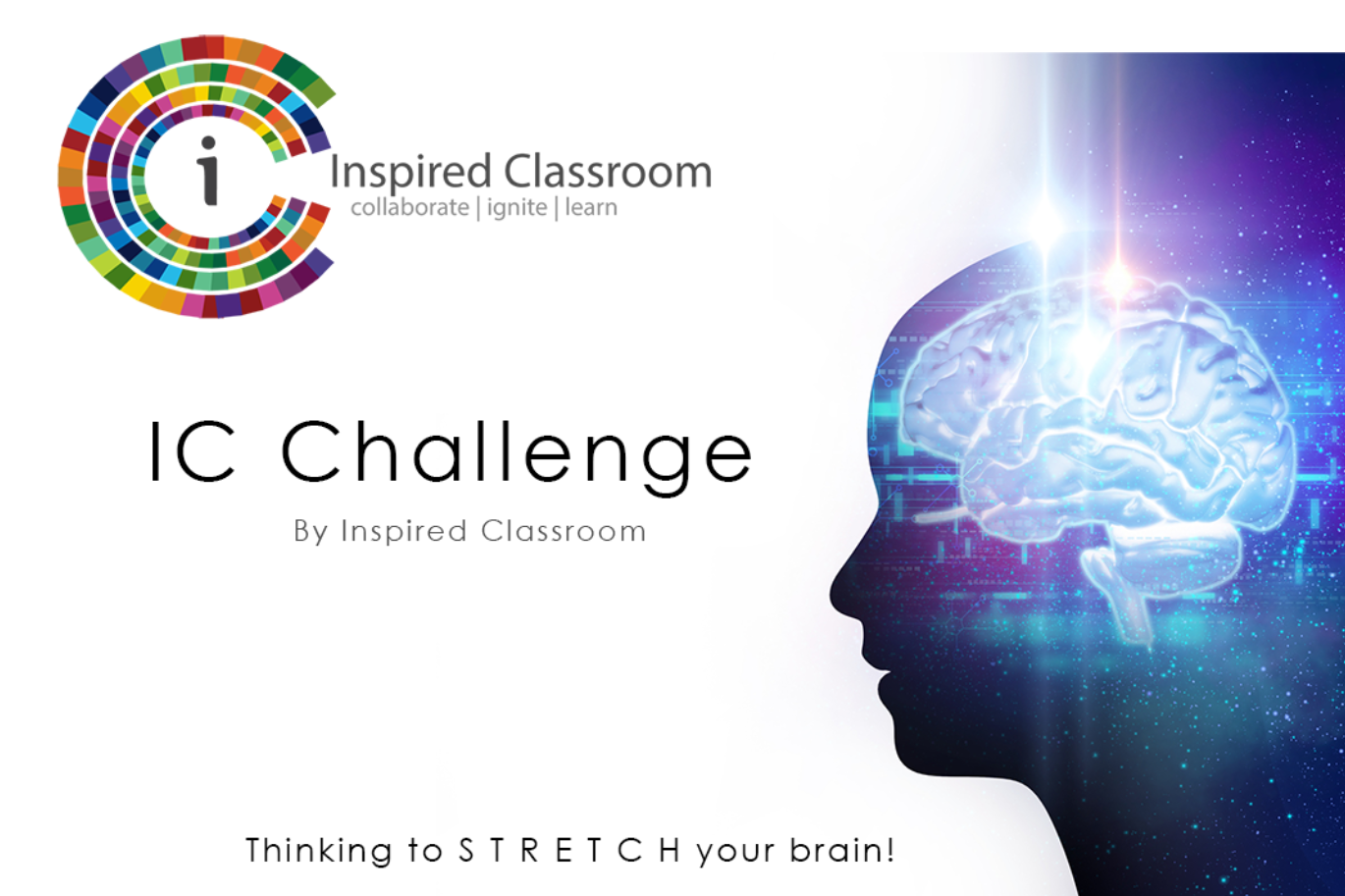Three Simple Words: The Challenges of Distance Education with a Child with ADHD

“Freedom of movement.” Three simple words. Easy enough to understand, and an art form to implement. I remember the challenges I encountered as a new teacher. Challenges I believe parents have come up against over the past few months, and continue in the wake of this unprecedented worldwide pandemic. Three simple words that apply to us all now. “Freedom of movement.” Across the United States, adults are fighting to maintain personal “freedom of movement,” even in the face of their own peril, and the peril to others. Yet, it is expected that children do what many adults cannot. Move without freedom. This is what is expected of our children today.
“Freedom of movement” seems simple enough to understand. As an experienced educator, these words are ubiquitous among a typical IEP (Individualized Education Plan) for a child diagnosed with ADHD (Attention Deficit Hyperactivity Disorder) or ADD (Attention Deficit Disorder). However, I struggled to apply these accommodations in a typical peer classroom, even with resources such as the use of flexible seating, fidget devices, centers and rotations, and academic programs such as Brain. It became clear that effectively accommodating “freedom of movement” for a child with ADHD or ADD is more art form than educational background. Our largest hurdle as educators became to create a classroom environment for students that we ourselves had never experienced. “Freedom of movement” is more than three simple words.

Pre-pandemic education lacked the training and resources for even the most educated and wellfunded (if there is one) school districts and teachers. Numerous studies (Beaudoin & Johnson 2011; Holt, Bartec, & Huelan, 2013; Kercood & Banda 2012; Reed et al., 2010; Shoval 2011) have proved that physical movement is key in enhancing academic achievement. As Jensen (2000, p.6) wrote,
Traditional seatwork engages less of the brain. If you want your learners to remember what they are learning get them involved; get them moving. Start playing more and ‘working’ less.
Parents who have their kids participating in sports, take them on hikes or bike rides, or engage in some other kind of physical activity know this as fact. This is obvious to any educator who has ever had one of the “fidgety” kids, and even more so to any parent who has had to deal with their kids on a long car ride or flight, where movement is restrained. The difference is that the majority of parents have not been responsible for both the emotional growth of their children and the formal educational advancement of them at the same time. There has been a well-established social contract that schools focus on the academic aspect with support from the parents, while parents focus on the character of the children with support from the schools. Thanks to Covid-19 the parents have been thrust into the role of teacher without having the benefit of going through a teacher training program, earning advanced degrees, and spending endless hours in professional development. School districts now expect accountants to teach biology, receptionists to master trigonometry, surgeons to focus on coloring within the lines, and all the while maintaining a sense of normalcy, keeping a family financially stable, adhering to the IEP, and somehow not losing their minds while juggling the needs of an ADHD child.
Unfortunately we are not living in typical times where those responsible for the education of our special needs students can apply time tested, research based, best practice approaches. Distance learning has taken our freedom of movement away and chained parents and families to the limitations of the WiFi signal and perimeter of the Chromebook cord.

When our own special kindergartner was first told he would be working online, it seemed like a perfect situation. He has been known to spend hours on end playing games on the iPhone or iPad that require levels of hand-eye coordination that even I lack as a former collegiate athlete. He can search, find, and download very particular games based on his mood at the time. Whether it be sports, art, puzzles, or strategy apps, he can do this all while sitting quietly even to the point of occasionally having a bathroom accident because he is so immersed in his activity. Many a pair of Spiderman underoos have been subjected to this horrific fate. He begs for some type of screen from the moment he wakes up until the moment he goes to sleep. Prior to his diagnosis of ADHD and subsequent medication schedule I would have sent my iPad a Father’s Day card as it did more supervision than me. Giving him technology access has been a spectacular motivator and also a devastating punishment. Downloading apps has been the single greatest incentive he could imagine in his ever-racing 6 year old mind. I dreaded the possibility of having to sit at a table and complete worksheets and workbooks with him, while simultaneously trying to complete my work responsibilities. Online learning seemed to fit his personality and interests like a glove. Oh how we were wrong!!!
We have been educators for 28 years collectively. During that time we have worked in both high and low needs elementary schools, a Title 1 middle school, taught inclusion classes, written and implemented hundreds of IEPs, presented at national conferences on differentiated instruction, earned three masters degrees in education, won local and national teaching awards, and spent hundreds of hours on inclusion professional development and special education instruction. Not a single second of that experience prepared us for what would happen over the past months of digital learning with our little man. It begs the question that if two professional educators were willing to either give up on distance learning completely, implement a military school approach, or just leave him with a traveling circus how are average parents with no educational experience other than attending school years ago expected to survive?
According to a report by the National Association for the Education of Young Children as far back as 2004, all classroom instruction should be developmentally and instructionally appropriate for the learner. However, even when his kindergarten teacher found age and ability appropriate websites, created interactive slideshows, and provided extremely entertaining (to us as parents at least) read alouds, there was still the daily schedule of crying, yelling, bribing, punishing, and reluctant acceptance. It was a microcosm of the stages of guilt each and everyday by both our little man and us. Every Google Meets video chat had a collection of over 20 6-year-olds all talking at once, showing off their favorite toys to the camera, and almost every day had a collection of kids walking around their homes giving virtual tours like a bunch of tiny real estate agents. Our guy’s favorite activity was to try to cajole the dog onto the camera and listen to the cacophony of approval from his classmates. Every classroom management strategy we had honed over the past 14 years proved utterly useless in the face of a hyper mini-man who was more excited to see his friends and show off his toys than listen to a lesson. Watching his teacher slowly descend into a reluctant acceptance of the chaos, and making the virtual eye contact and connection of mutual frustration gave the miniscule feeling of sympathy. Even the excitement of the initial video chats only had a shelf life of approximately 8-10 minutes before he would inevitably wander off for a snack, ask to play on the phone, or to chase the dog. The beautiful non-filtered mouth of a child had several un-muted incidents where he would loudly profess his boredom and ask when class would be over. On the rare occasion when we could walk away for a minute, his focus would last only as long as his next correct answer, which he would immediately leave the computer to come find us and give an extremely detailed accounting of both the question and answer experience. For those of us old enough to remember records, when the song would skip and repeat the same line over and over again until you smacked the record player, this is what would happen with him. A three second statement could become a five minute repetition worthy of the world’s greatest DJ scratching a record. We would have had a better chance to put a wet wolverine into a cardboard box than to get him to keep his eyes on the computer screen. I thank each and every possible deity that my step-daughter doesn’t have the same affliction, otherwise there might be a pony in my backyard as compensation for a 30 minute Zoom meeting.

Again we discussed how a typical parent, even ones with advanced degrees outside of education, were managing. The texts of frustrated parent memes started to come fast and furious mere days into distance learning. Social media posts joking about homeschool teachers day drinking and trying to expel their students became routine. The humor masked the underlying trauma. What is happening in homes where non-teacher parents had to be both digital-employee and virtual-teacher at the same time? How much academic damage and regression was occurring in homes all over the country, with or without children with ADHD when they decided logging on everyday just wasn’t worth the fight? How much emotional trauma has been inflicted on both children and caregivers with these daily battles? How has the brain development of children with unique intellectual abilities been stunted, halted, or even regressed through this process? Our own pediatrician has questioned this and has raised concerns of ADHD children and their brain development due to distance learning. If the home of teachers had become an academic and emotional war zone, it is absolutely terrifying to envision what is happening in the average household of an ADHD child, and borderline criminal from an academic standpoint when factoring in the variables of homes lacking the most basic financial, educational, nutritional, language, and accessibility supports.
How did we come to wrangle a tiny tornado into participating? We utilized a “freedom of movement” plan. He didn’t need to sit in front of the screen but had a set area in which he could walk and move while still listening to the teacher. An extended headphone cord allowed a bit of tethered mobility while not disturbing everyone else in the house. We also implemented our own individualized schedule to complete the assignment work. We knew when he got hungry, tired, or when the meds were wearing off and any instruction would have been met with a meltdown. Online work was timed and rewarded with an equivalent amount of time on the phone, playing a game, or watching tv. Ultimately we accepted that the lessons we could provide through interactive play, personal responsibility, fun art projects, self-directed activities, and engaging in general conversations using proper grammar and syntax would be much more beneficial than doing a timed math fact game on a program. Playing with water balloons and watching the water evaporate on the Las Vegas sidewalk was a far more interesting lesson than watching a video on the water cycle. Wrapping a jar of coins and calculating the value not only took a couple hours, but helped with math much more than any program that was met with ‘Is that the last problem?’ starting on question number 2.
Ultimately each parent knows the idiosyncrasies of their child far better than the average teacher, and infinitely more accurately than even the best computer adaptive program. All parents, educators and not, are in the same boat and we are all having the same struggles. ADHD is exhausting for the mind and body of our little ones, and equally taxing on the adults tasked with raising them. To the newly appointed pandemic quarantine teachers: take the time to decompress. Have a virtual happy hour, go for an adult-only walk, or watch an R-rated movie with lots of bad words! While distance learning might be working for some children, understand the “typical” ADHD child is going to struggle. Just because they can play videogames all day long doesn’t mean those skills translate to being on a computer. We evaluated our little guy on his personal, social, and emotional growth, not on the number of sight words he obtained or math facts he could complete. We took attendance not based on minutes engaged on the computer, but meaningful activities engaged with us. We implemented a “freedom of movement” not only for his body, but his mind, which ultimately helped us to not lose ours.
This article is available and can be accessed in Spanish here.
NAEYC: Developmentally Appropriate Practice in Early Childhood Programs Serving Children from Birth through Age 8/ (2009). Retrieved from: https://www.naeyc.org/sites/default/files/globally-shared/downloads/PDFs/resources/position-statements/PSDAP.pdf
Beaudoin, C. R., & Johnston, P. (2011). The impact of purposeful movement in algebra instruction. Project Innovation, Inc., 132(1), 82-96.
Holt, E., Bartee, T., & Heelan, K. (2013). Evaluation of a policy to integrate physical activity into the school day. Journal of Physical Activity & Health, 10(4), 480-487
Jensen, E. (2000). Moving with the brain in mind. Thousand Oaks, CA; Corwin Press.
Kercood, S., & Banda, D. R. (2012). The effects of added physical activity on performance during a listening comprehension task for students with and without attention problems. International Journal of Applied Educational Studies, 13(1), 19-32.
Reed, J. A., Einstein, G., Hahn, E., Hooker, S. P., Gross, V. P., & Kravitz, J. (2010). Examining the impact of integrating physical activity on fluid intelligence and academic performance in an elementary school setting: A preliminary investigation. Journal of Physical Activity & Health, 7(3), 343-351.
Shoval, E., & Shulruf, B. (2011). Who benefits from cooperative learning with movement activity? School Psychology International, 32(1), 58-72.l









